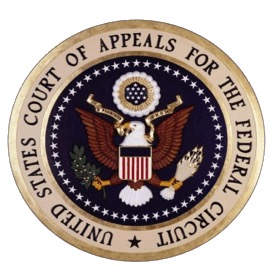 The United States Court of Appeals for the Federal Circuit recently issued a decision in In re Smith International, Inc. As described by Judge Alan Lourie, writing for the unanimous panel (consisting of Judges Reyna and Hughes), “[t]his case primarily concerns what the word ‘body’ means in the context of the ‘817 patent.” More specifically, however, the legal point at issue making this case a precedential decision was how far the Patent Office may go when applying the “broadest reasonable interpretation” (“BRI”). The Federal Circuit decided that in applying the broadest reasonable interpretation, the examiner and Patent Trial and Appeal Board (PTAB) arrived at an unreasonable interpretation not supported by the specification.
The United States Court of Appeals for the Federal Circuit recently issued a decision in In re Smith International, Inc. As described by Judge Alan Lourie, writing for the unanimous panel (consisting of Judges Reyna and Hughes), “[t]his case primarily concerns what the word ‘body’ means in the context of the ‘817 patent.” More specifically, however, the legal point at issue making this case a precedential decision was how far the Patent Office may go when applying the “broadest reasonable interpretation” (“BRI”). The Federal Circuit decided that in applying the broadest reasonable interpretation, the examiner and Patent Trial and Appeal Board (PTAB) arrived at an unreasonable interpretation not supported by the specification.
The examiner interpreted the critical term “body” as being very broad and possible of encompassing other components such as a “mandrel” and a “cam sleeve,” which were taught by the Eddison reference. The Board affirmed this interpretation by the examiner because the specification did not prohibit the examiner’s broad reading of the term “body.”
The Federal Circuit concluded that the Board’s construction of the term “body” was unreasonably broad even given proper usage of the broadest reasonable interpretation claim standard. Judge Lourie explained that broadest reasonable interpretation does not mean an interpretation so broad that it would encompass an unreasonable construction under claim construction principles, nor does broadest reasonable interpretation allow for a legally incorrect interpretation that is divorced from the specification and record evidence.
The Federal Circuit went on to explain the proper inquiry in light of the broadest reasonable interpretation standard:
The correct inquiry in giving a claim term its broadest reasonable interpretation in light of the specification is not whether the specification proscribes or precludes some broad reading of the claim term adopted by the examiner. And it is not simply an interpretation that is not inconsistent with the specification. It is an interpretation that corresponds with what and how the inventor describes his invention in the specification, i.e., an interpretation that is “consistent with the specification.” In re Morris, 127 F.3d 1048, 1054 (Fed. Cir. 1997) (citation and internal quotation marks omitted); see also In re Suitco Surface, 603 F.3d 1255, 1259–60 (Fed. Cir. 2010).
Absent a comprehensive glossary that defines each and every term appearing in a patent application, it would be impossible for any applicant to ever proscribe and/or preclude any and all possible broad readings for various terms that a patent examiner may come up with after the fact. Defining every term has never been required and anticipating frivolous examiner arguments has never been required, and is in fact considered inappropriate.
In this case, the Federal Circuit ultimately concluded that the claims in question were not unpatentable in light of a proper claim construction, and therefore reversed the Board.
Tags: BRI, CAFC, Federal Circuit, patent, patents




You share in the PLI Practice Center community, so we just ask that you keep things civil. Leave out the personal attacks. Do not use profanity, ethnic or racial slurs, or take shots at anyone's sexual orientation or religion. If you can't be nice, we reserve the right to remove your material and ban users who violate our Terms of Service.